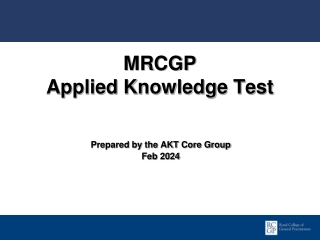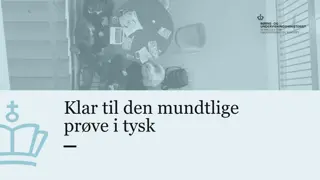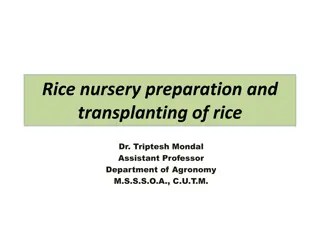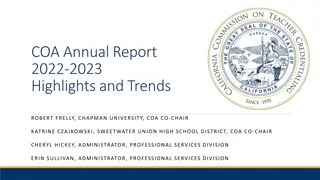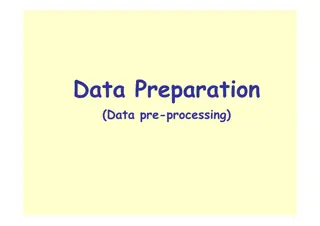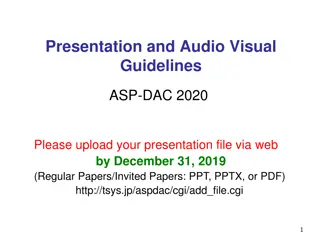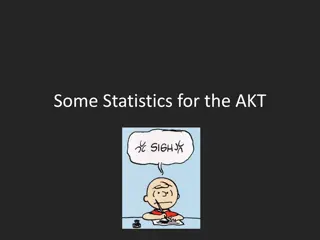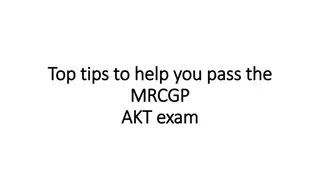
Understanding Analytical Studies in Evidence-Based Research
Explore the hierarchy of evidence, cross-sectional studies, p-values, confidence intervals, and more in the realm of analytical studies for evidence-based research. Learn about different study designs and their significance in determining causal relationships and treatment outcomes.
Download Presentation

Please find below an Image/Link to download the presentation.
The content on the website is provided AS IS for your information and personal use only. It may not be sold, licensed, or shared on other websites without obtaining consent from the author. If you encounter any issues during the download, it is possible that the publisher has removed the file from their server.
You are allowed to download the files provided on this website for personal or commercial use, subject to the condition that they are used lawfully. All files are the property of their respective owners.
The content on the website is provided AS IS for your information and personal use only. It may not be sold, licensed, or shared on other websites without obtaining consent from the author.
E N D
Presentation Transcript
PROGRAMME INTRODUCTION STATS LEARNING RESOURCES RCGP AKT FEEDBACK INTERACTIVE BIT
Simple math Mean Median Mode Effect of outliers
Hierarchy of evidence (I-1) a well done systematic review of 2 or more RCTs (I-2) a RCT- randomised to groups, diff rx, analyse results (II-1) a cohort study ( prospective, following a well popn) (II-2) a case-control study ( retrospective, matches cases/controls, look back for associations) (II-3) a dramatic uncontrolled experiment (III) respected authorities, expert committees, etc.. (good old boys sitting heroically at tables?) (IV)....someone once told me- anecdotes, case report
Cross sectional studies Observational Describe how things are now- snap shot in time Look at samples of populations or special groups Do not have a separate control or comparison group The term survey refers to the method Key word: cross sectional Various ways of selecting sample. - hypothesis FORMING - cannot indicate cause & effect
ANALYTICAL STUDIES Try to determine whether a factor really is involved in a disease or whether a particular intervention really does improve the treatment outcome . This outcome could happen by chance
P- value CHANCE - p = 1 in 20 (0.05). > 1 in 20 (0.051) = not significant < 1 in 20 (0.049) = statistically significant, unlikely to have occurred by chance <1 in 100 highly significant, highly unlikely to have occurred by chance <1 in 1000 very highly significant, very highly unlikely to have occurred by chance
Confidence intervals This defines the range of values between which we could be 95% certain that this result would lie if this intervention was applied to the general population The larger the sample- the smaller the interval- we are more sure of the result. Is measured at the mean 2 standard deviations. (95% of the values lie between these values) SD is the way of measuring how far from the average mean the values are spread
Case Studies, Reports Observational studies 5 cases of male homosexuals in San Francisco with P carnii as cause of pneumonia, subsequently shown to have HIV infection and AIDS Not determining a causal affect Raise awareness
Case Control Studies Select a group of patients with a characteristic eg a disease lung cancer The characteristics of this set are then compared with a control group who do not have the disease being studied but all all other respects must be as identical as possible. Case studies look backwards in time at exposure to risk factor eg smoking - RETROSPECTIVE Can use info to calculate odds ratio odds of getting disease in exposed /odds of getting disease if unexposed
Odds Ratio a ratio of risk in case control studies suggesting association not causation E.g. In 100 patients with Lung Ca 60 are passive smokers In 400 controls with no cancer 150 are passive smokers Odds of having lung cancer as a passive smoker ieexposed to risk are 60:40 Odds of not having lung cancer as a passive smoker are 150:400 The odds ratio for passive smoking as a risk of lung cancer will be 60/40 = 2.5x 150/250
Odds Ratio DISEASE Cases a c Controls b d Yes No exp pas sm n/e pas sm Odds Ratio = a/b divided by c/d Disease Cases Controls (lung cancer) EXPOSURE ( pas.smoking) Yes No 60 40 150 250 The odds ratio would therefore be 60/150 div by 40/250 = 2.5
Odds ratio OR = 1: no association OR > 1: possible association in this case possible association between exposure to passive smoking and getting cancer OR < 1: protective effect Further studies would then be indicated
Cohort Studies A group is identified and then followed forward to see what happens PROSPECTIVE May have a comparison or control group , identified from start but not essential Framingham study started 1949 identified group of 5209 men and women aged 30-59 as a representative sample identify RISK FACTORS associated with CVD
Cohort studies Develop disease Do not develop disease Exposed to x a b Not exposed to x c d "What is the incidence of disease attributable to exposure" Answer = a - c. Absolute risk Relative risk "How many times are exposed persons more likely to develop the disease, relative to non-exposed persons?" i.e. the incidence in the exposed divided by the incidence in the non-exposed. WE ARE LOOKING AT ONE THING COMPARED TO ANOTHER This is expressed as a /a+bdivided by c/c+d
Risk of getting cancer as a smoker compared to non smoker In a Cohort study a ratio of risk Cancer Not getting cancer 10 600 Non smoker 1 800 Smoke Absolute risk= 9 Relative risk = 10/610 = 13.1x 1/180
Eg Cohort Study Deep vein thromboses (DVT) in oral contraceptive users. (Hypothetical results). OUTCOME (DVT) Yes No Exposed ( on oral contraceptive ) 41 Not exposed (not on o.c.) 9996 10009 7 Absolute risk of 34 Relative risk of 6 ( 41/10037 divided by 7/10016)- significantly large enough numbers to indicate the possibility of a real association between exposure and outcome. However, the possibility of biases very often arises.
What is bias? Selection bias Observer bias Participant bias Withdrawal or drop out bias Recall bias Measurement bias Publication bias
Bias (1) Selection bias select sicker patients to get the active or new Rx and fitter patients to get placebo or older Rx Observer bias if we know the patient has active treatment can subconsciously record health status as being better Participant bias e.g. in study looking at Gi bleeds in NSAID v non-NSAID users, the people who are not prescribed NSAIDs buy them OTC. Withdrawal / drop out if lose people from the study those left at the end may not be representative of those originally included, and their numbers may be very much smaller so affecting the validity and generalisabilityof event rates.
Bias (2) Recall mothers of kids with leukaemia remember living near high voltage cables. Mothers of kids without leukaemia may not remember living near cables . Measurement bias e.g. measuring BP in trials with sphygs that are not calibrated Publication bias positive studies get published much more often than equivocal or negative studies
Confounding Confounding is a particular form of bias where both the disease or outcome being measured and the intervention are associated with the confounding variable .
Confounding (2) Coffee drinking (intervention)is positively associated with smoking ( confounding variable), and smoking is positively associated with lung cancer (disease). Hence a study could show an association between coffee drinking and lung cancer but it would be confounded (rather than biased). STUDY C O FFEE DRINKING LUNG C A NC ER SMO KING C O NFO UNDING V A RIA BLE
Looking at use of pro-biotics post intercourse to prevent uti symptoms Relative risk if given probiotics? Absolute risk reduction NNT /give probiotic Patients who got uti Patients who did notget uti Total Patients given probiotic 49 55 104 Patients not given probiotic 63 38 101 112 93 205
Relative risk: (49/104) / (63/101) = 0.76. Risk or chance of getting uti if given probioticsover risk of getting uti if not given probioic i.e the relative risk of patients getting a uti if they were given probiotics is reduced by 24% ( 0.76 is less than 1 so a beneficial effect) aka the risk ratio Uti Nouti Pro-b 49 55 104 Not given pro-b 63 38 101 112 93 205
Absolute risk reduction: (49/104) (63/101) = 0.15. Also known as the risk difference. i.e. the difference in the risk of getting a uti depending on whether probiotics were used used or not. ( minus rather than divide we are looking at the reduction, not the ratio) NNT: 1 / 0.15 = 7. i.e. 7 people need to be given a pro biotics in order for 1 additional person not to get a uti Uti No uti probiotics 49 55 104 No probiotics 63 38 101 112 93 205
How many people you need to treat with the study intervention, ie give probiotics to to, to stop the study event from happening once (getting a water infection) NUMBER NEEDED TO TREAT = 1/ARR ARR=0.15 NNT: 1 / 0.15 = 7. i.e. 7 people need to be given a pro biotics in order for 1 additional person not to get a uti
Randomised Controlled Trials The gold standard Concerned with effectiveness Looks at outcome may not always be beneficial s/e Key words: random allocation, double blind, placebo controlled Designed to restrict bias
Why arent there more RCTs Ethics can t usually do RCTs re Qs with potential to harm. E.g. getting thousands of medical students and randomising half of them to smoke and the rest not to smoke and seeing how many in each group get lung cancer 30 years later is not ok. But there are RCTs comparing NSAIDs in which the outcomes were PUBs. OK because intervention sought to reduce the rate of harmful events. Cost obvious. Feasibility E.g. may not be possible to reproduce a one-off exposure to an environmental mishap such as tipping aluminium into a water supply. Practicality if have a q re prevalence better to use cross sectional study
Relative risk / benefits can sound big Your chance of winning the lottery with 2 tickets as opposed to one is increased by 100% Absolute risk / benefits often sound small Your chance of winning the lottery with 2 tickets as opposed to one is increased by 1 in 14million
What is a review? An article which looks at a question or subject and seeks to summarise and bring together evidence on a health topic.
What is a systematic review a piece of rigorous research a review where a question is posed, a target population of information sources identified and accessed, appropriate information obtained from that population in an unbiased fashion, and conclusions derived. strives to comprehensively identify and track down all the literature on a topic. Searches needed of unpublished work, foreign journals, citation searches and follow up of references. methodology is explicit and reproducible
Check list of data sources medline cochrane other medical and paramedical databases foreign language literature Grey literature.(theses, internal reports, non-peer reviewed journals, pharmaceutical industry files) references other unpublished sources to exclude publication bias raw data from published trials
Reduced RR Increased RR Randomised Trials HIP Two County Malmo Edinburgh Stockholm Geographical study UK Case control studies BCDDP Nijmegen Utrecht Florence 0.1 0.2 0.5 1.0 2.0 Relative risk
Why bother with systematic reviews To reduce large volumes of information to bite size pieces. To allow decision makers to integrate critical pieces of biomedical information. An efficient scientific technique which is often less costly than embarking on new research. The generalisabilityof scientific findings can be established To assess the consistency of relationships. To explain data inconsistencies and conflicts in data. Increased power. Increased precision in estimates of effect. To reduce random and systematic errors.
Meta analysis Meta-analysis :- a specific statistical technique for assembling all the results of several studies into a single numerical estimate Forrest plot,blobbogram
The Cochrane Logo The results of a systematic review of RCTs of a short, inexpensive course of a corticosteroid given to women about to give birth too early. The first of these RCTs was reported in 1972. The diagram summarises the evidence that would have been revealed had the available RCTs been reviewed systematically a decade later . It indicates strongly that corticosteroids reduce the risk of babies dying from the complications of immaturity. By 1991, seven more trials had been reported, and the picture had become still stronger. This treatment reduces the odds of the babies of these women dying from the complications of immaturity by 30 to 50 per cent.
Because no systematic review of these trials had been published until 1989, most obstetricians had not realised that the treatment was so effective. As a result, tens of thousands of premature babies had probably suffered and died unnecessarily (and needed more expensive treatment than was necessary). This is just one of many examples of the human costs resulting from failure to perform systematic, up-to-date reviews of RCTs of health care
Impact of Treatment on Mortality Study name Statistics for each study Odds ratio and 95% CI Odds ratio Lower limit Upper limit Kelly, 1964 Hedrin, 1980 Leigh, 1962 Novak, 1992 Saint, 1998 Pilbean, 1936 Day, 1960 Kelly, 1966 Singh, 2000 Stewart, 1994 0.590 0.464 0.394 0.490 1.250 0.129 0.313 0.429 0.718 0.143 0.328 0.096 0.201 0.076 0.088 0.479 0.027 0.054 0.070 0.237 0.082 0.233 3.634 1.074 2.055 2.737 3.261 0.605 1.805 2.620 2.179 0.250 0.462 0.01 0.1 1 10 100 Favours Tx Favours Pbo Meta Analysis
Prevention Primary removing cause- legislation re passive smoking Secondary identifying presymptomatic disease before damage is done dm screening Tertiary limiting complications /disability in established disease by regular surveillance diabetic eye screening
Screening Screening is a process of identifying apparently healthy people who may be at increased risk of or in early stages of a disease or condition. They can then be offered information, further tests and appropriate treatment to reduce their risk and/or any complications arising from the disease or condition- ie improve outcome Or, in some cases, to provide information eg Down s screening
Some screening tests antenatal anomaly scan, infectious diseases in preg new born neonatal exam, blood spot ( pku, cf, sickle /thal, cht, mcadd), newborn hearing screening programme cancer screening cervical , breast, bowel; prostate cancer Diabetes - eyes abdominal aortic aneurysm screening Chlamydia PSA
Wilson & Junger Criteria Important public health problem Natural history of disease should be understood Treatment at an early stage should be more benefit than treatment at a later stage Should be a suitable test sens, spec, safe, easy to interpret Test should be acceptable to the population Should be adequate facilities for diagnosis and treatment. Intervals of testing identified and understood There should be a recognizable early stage The chance of psychological harm to those screened should be less than the chance of benefit. Cost balanced against the benefit provided
CONDITION: Common,Important,Diagnosable,Have a latent interval TEST Cheap and simple, Continuous intervals of testing identified and understood,Targeted towards a high risk group. AND Disease should be readily treatable,Tests should be sensitive, specific, safe , acceptable and easy to interpret,Benefits outweigh costs
Sensitivity TRUE POSITIVES: TESTS ABILITY TO CORRECTLY IDENTIFY THOSE WITH DISEASE IF POSITIVE, YOU PROBABLY DO HAVE CONDITION Specificity TRUE NEGATIVES - TESTS ABILITY TO CORRECTLY EXCLUDE THOSE WITHOUT DISEASE IF TEST IS NEGATIVE, YOU PROBABLY DON T HAVE CANCER Incidence No. of new cases in a given population over a given period of time. Prevalence The proportion of people with a finding or disease in a given population at a given time
Sensitivity The test s ability to correctly identify those people with disease So = True Positives True Positives + False negatives i.e. all those who truly have the disease




